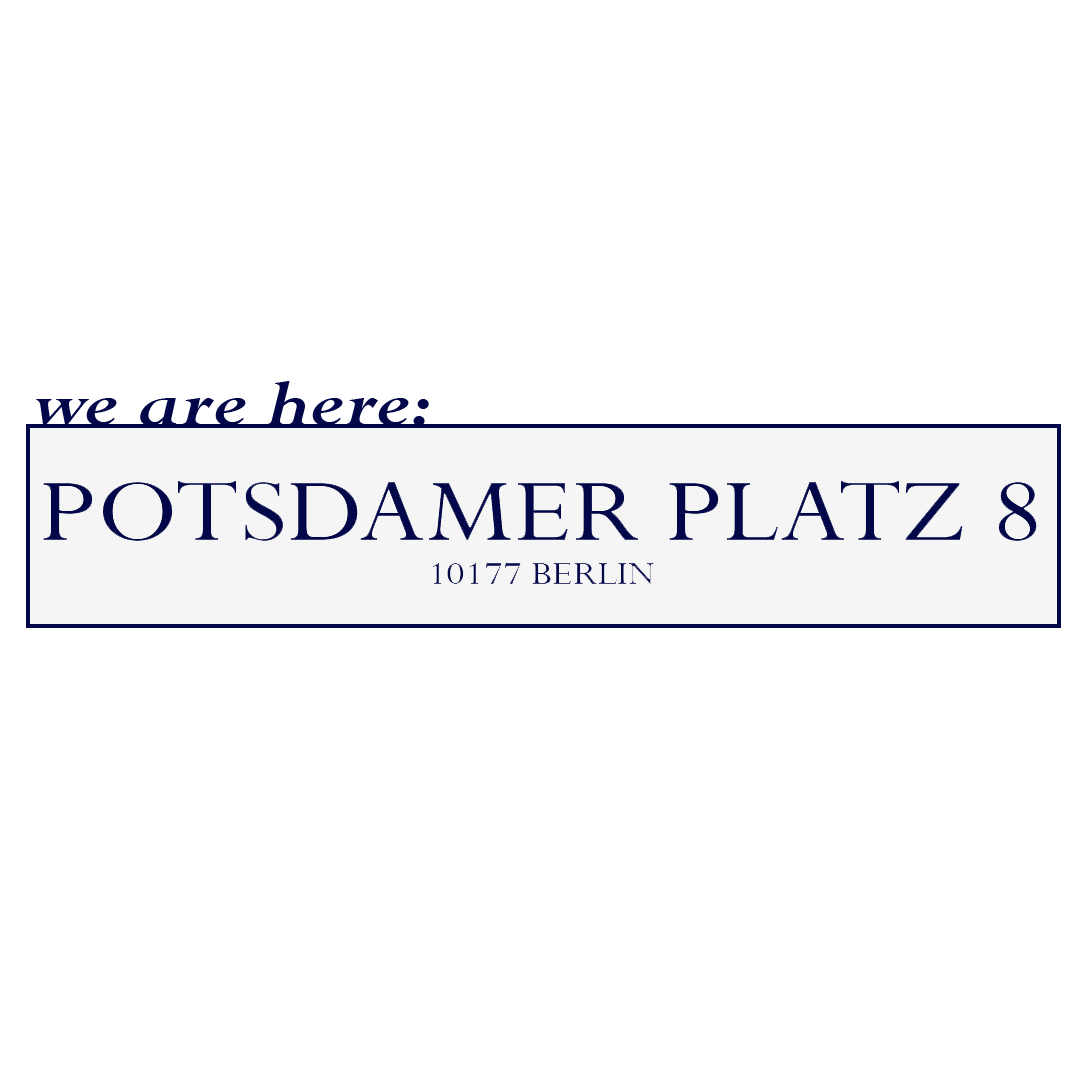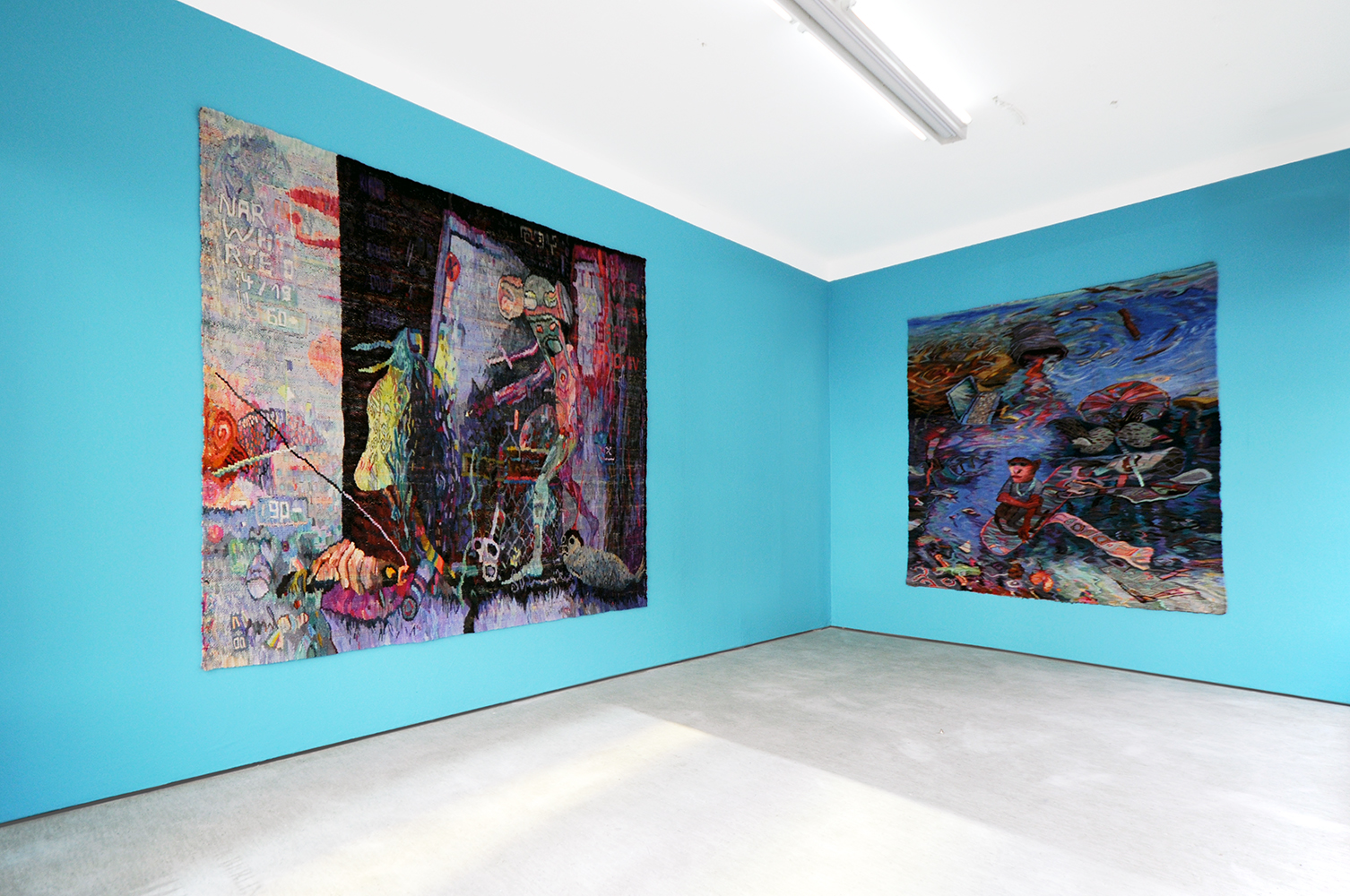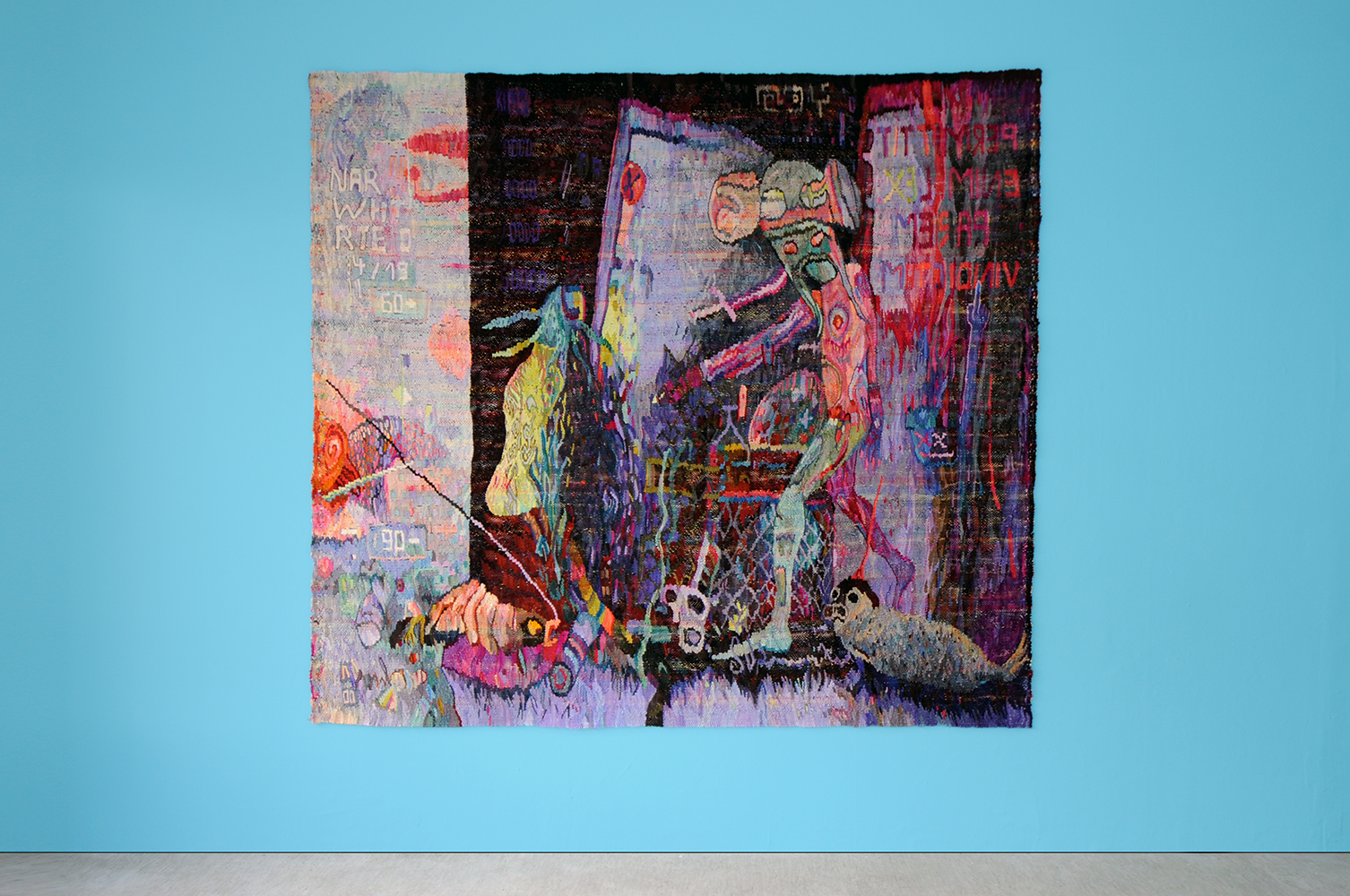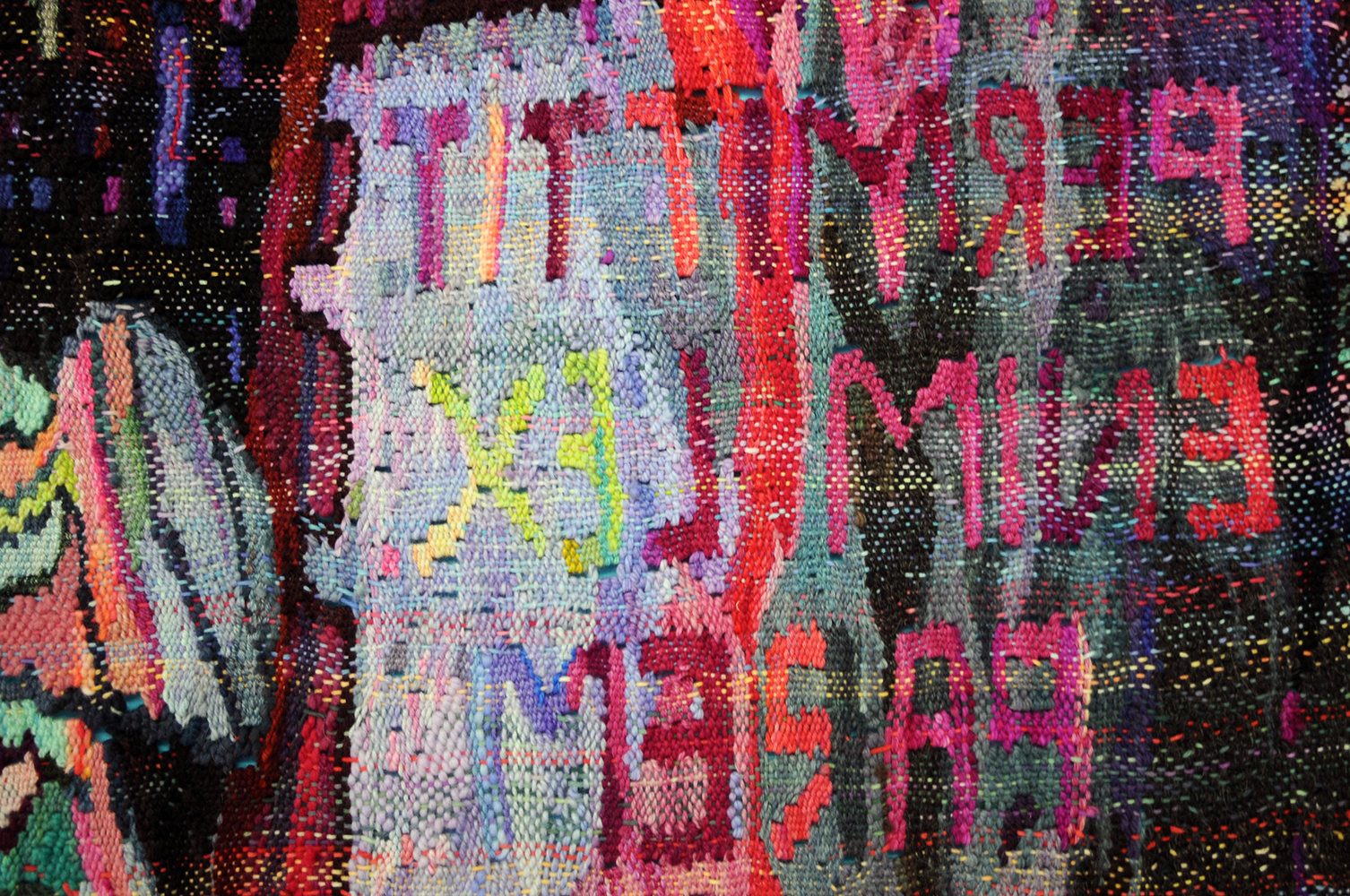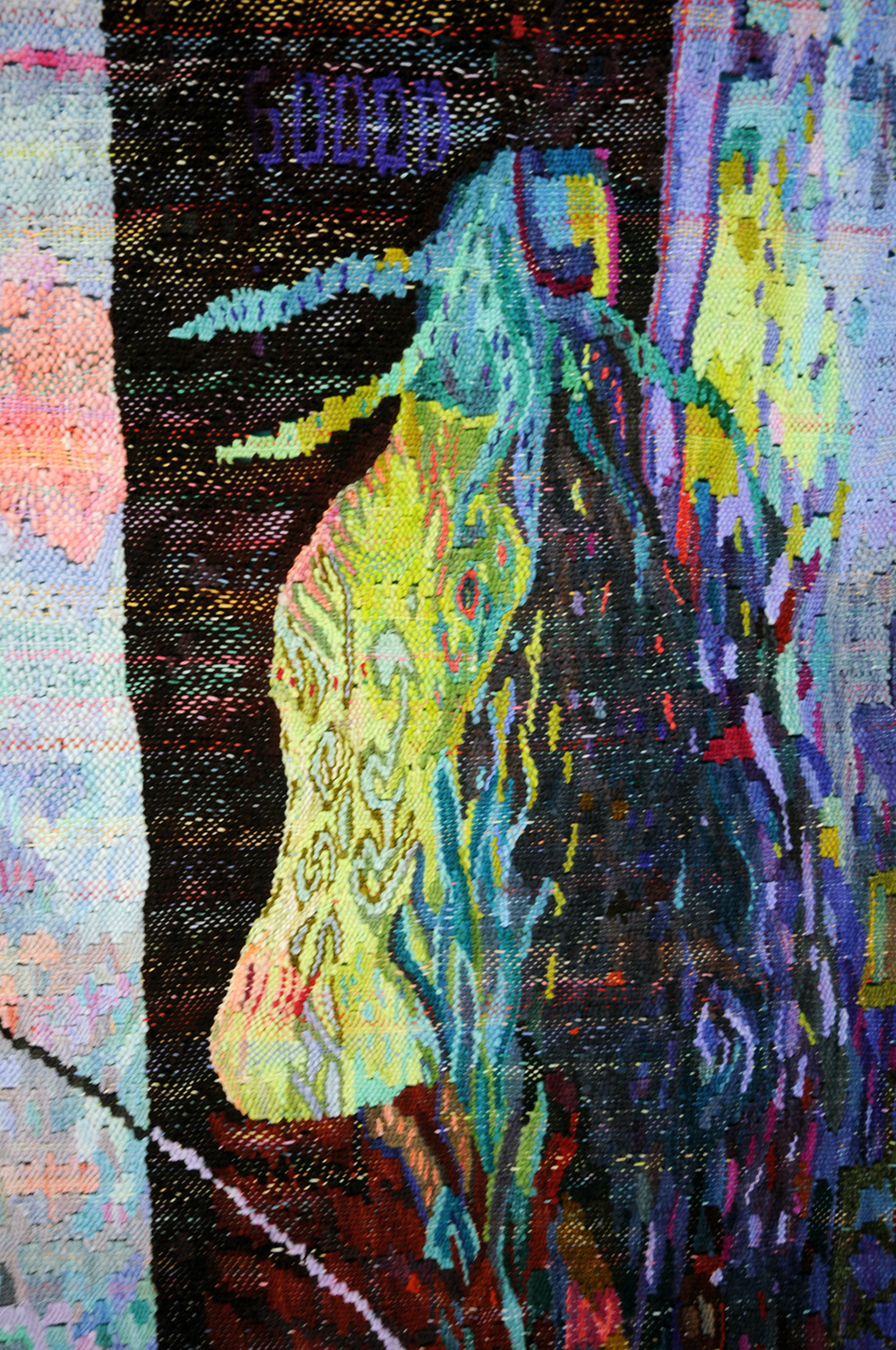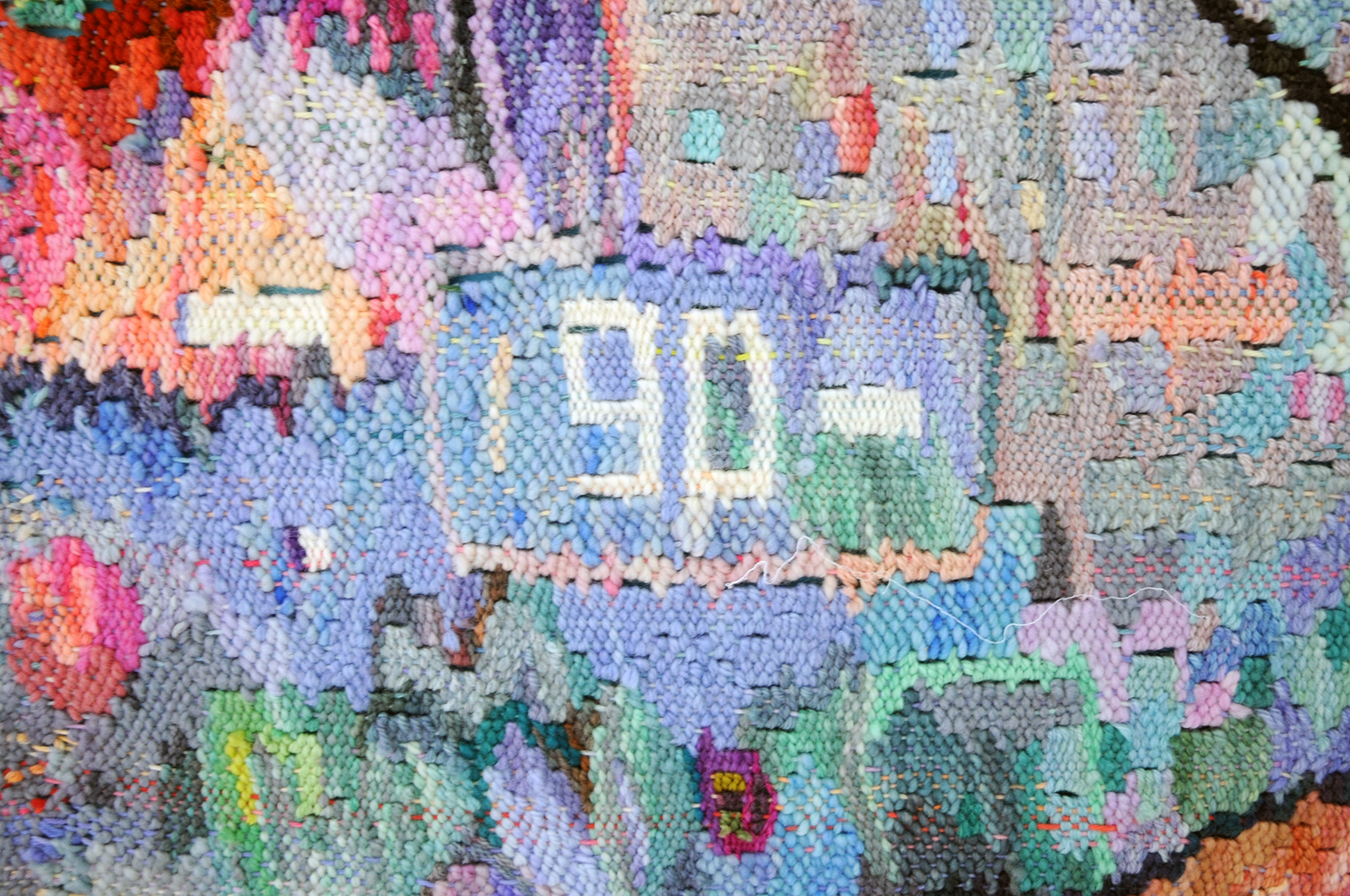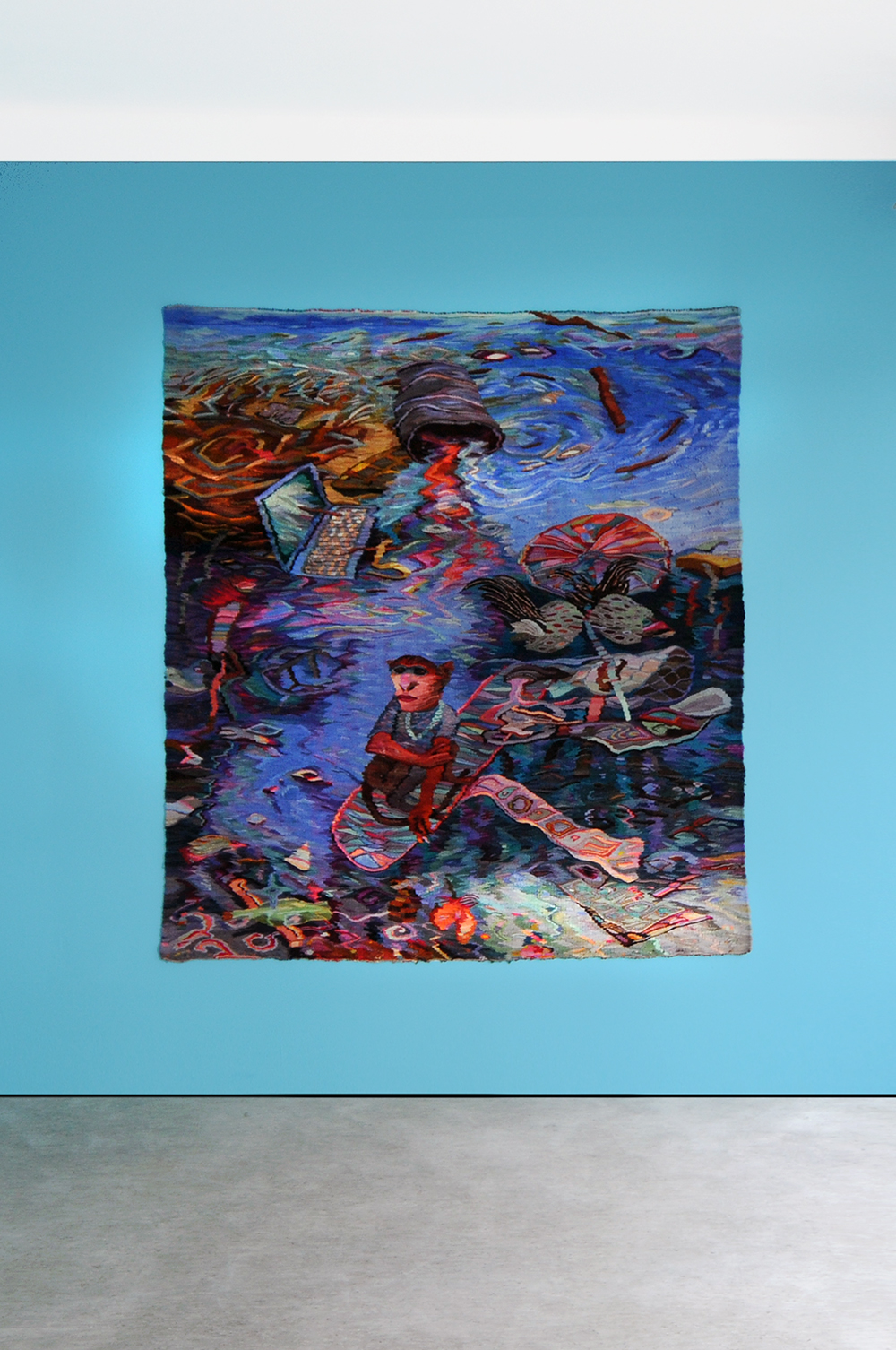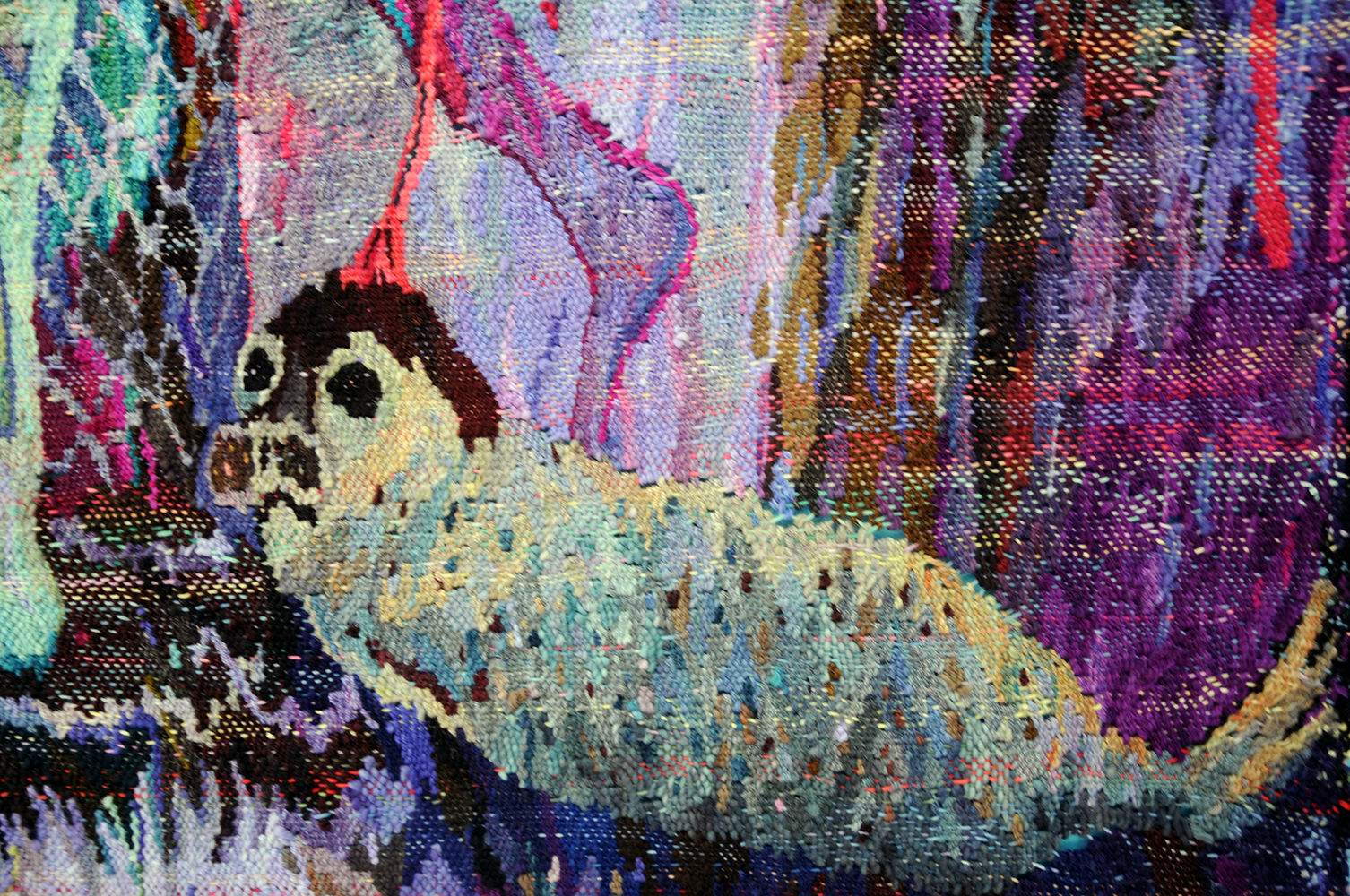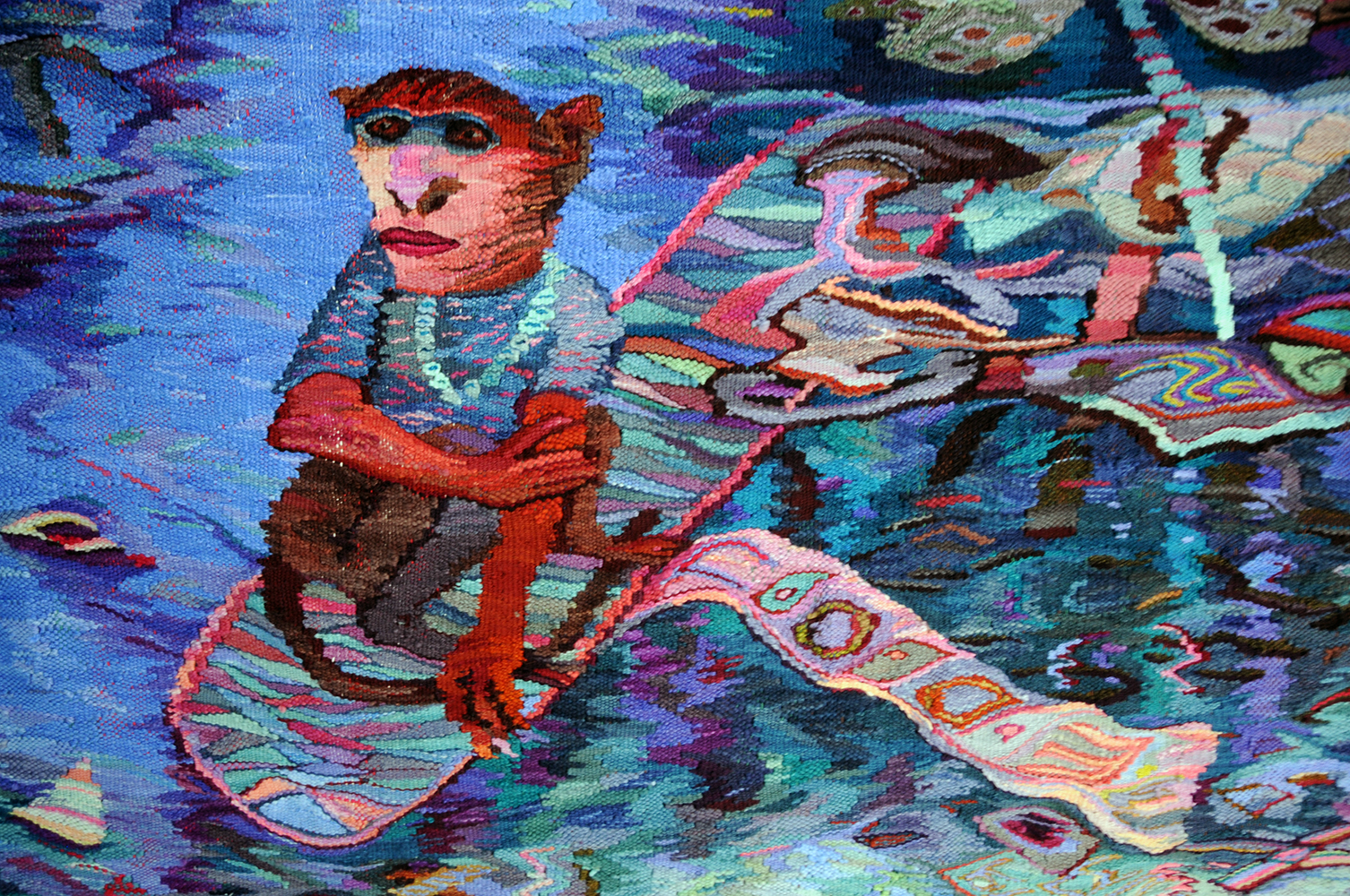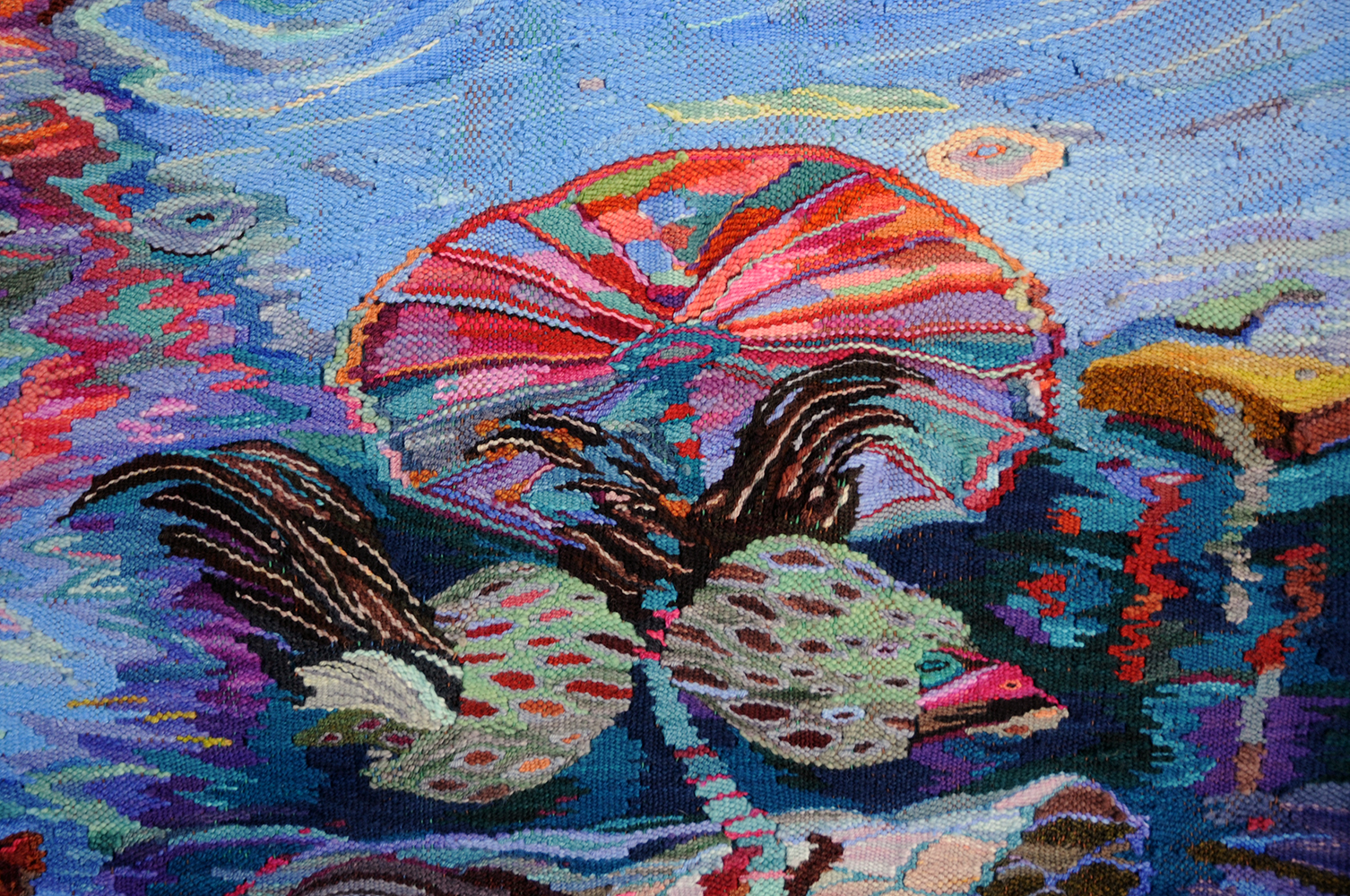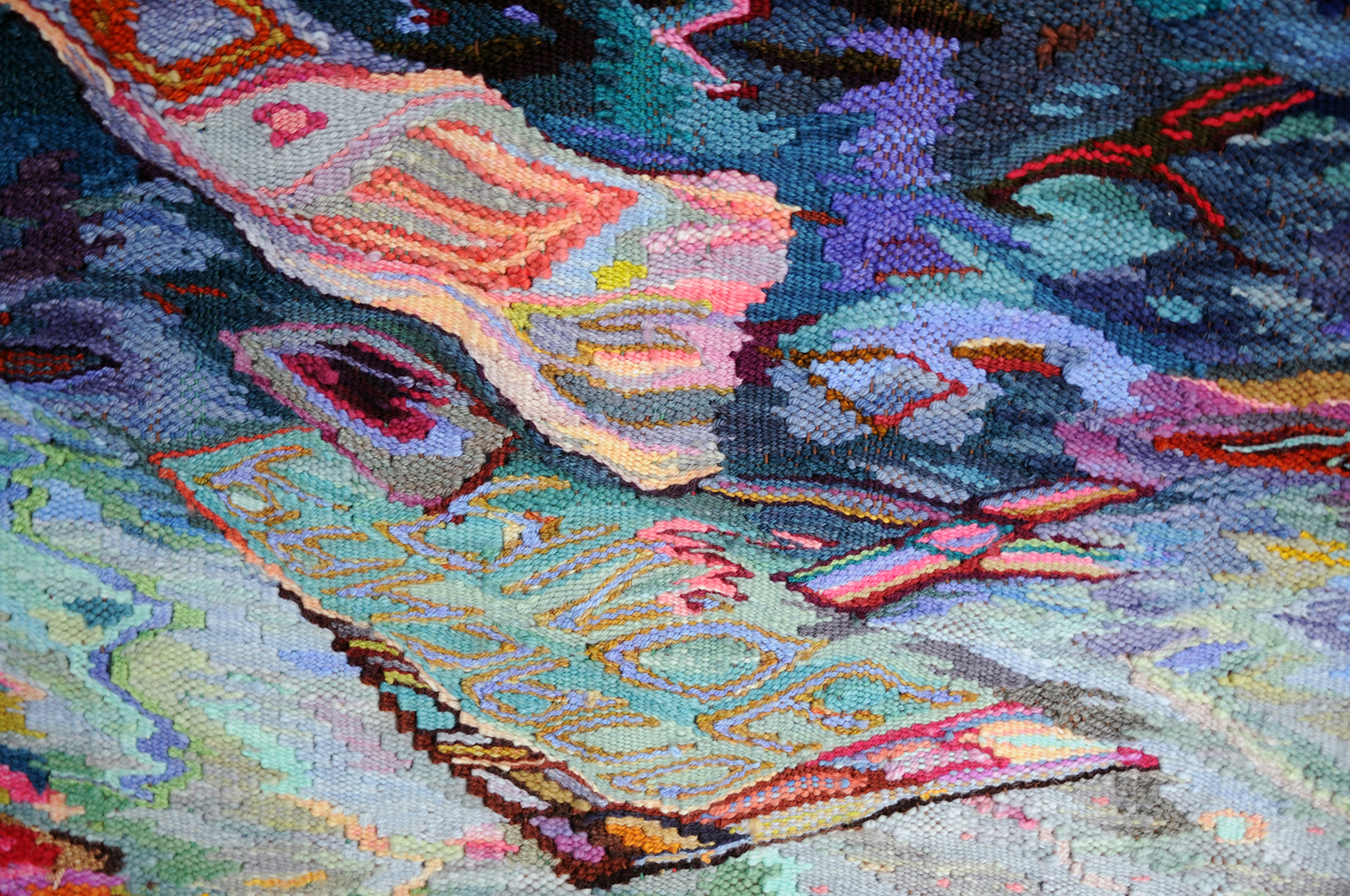Past
Kata Unger
German Angst
The scenes that open up before the viewer in the large-format weavings of Berlin-based artist Kata Unger seem dystopian. Futuristic-looking combat androids meet baby seals, a monkey creature drifts on a surfboard among the remains of a civilisation that does not care about the environment or fauna. The eye drifts along, trying to orient itself, concentrating alternately on colours, forms and motifs.
Kata Unger's pictorial landscapes are created on the high loom. The artist dyes wool and silk threads herself and turns them into impressive tapestries that magically combine this ancient technique of weaving with both highly topical themes and an aesthetic influenced by computer games and media imagery.
However, it is not only on an aesthetic level that themes such as technologisation and digital worlds play a role in Unger's works. The artist understands the work on the loom as being in direct line with computer technologies that are based on a binary system of zeros and ones. Considering that the first mechanical loom was controlled by punch card, this connection hardly seems surprising. And if you look at Unger's weaving works up close, it almost seems as if the texture created by weaving corresponds to the dot-like resolution of a computer screen.
The dual system of the textile fabric, warp and weft forming a grid, zeros and ones, man and nature, colour and form, content and message, image and viewer - in this world of binary pairings, Kata Unger nevertheless leaves space beyond binarity, creates it by building a bridge between one of the oldest techniques in human history and a fearful vision of a technologised world in which loss of control, surveillance fantasies and fragmentation seem to make building such bridges impossible. Whether we allow ourselves to be carried away by German Angst, or see this connection as an opportunity to free ourselves from the fear provoked by binary, exclusionary systems, is ultimately left up to the viewers of Kata Unger's works.
Elsa Mack
